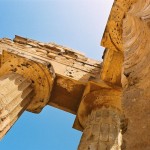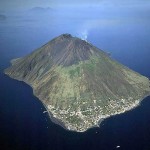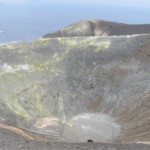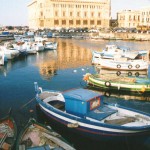Lipari is the largest and most populated island. It is the capital of the Aeolian Islands and it offers to the traveller who arrives by boat the enchanting view of its Acropolis with walls, presided over by the Cathedral with an entrance on each side.
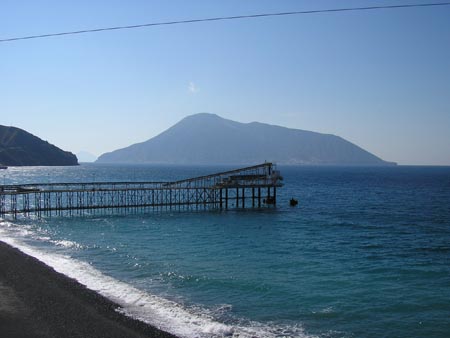
Already 4.000 years ago, Neolithic men inhabited Lipari, attracted by the obsidian quarries, which allowed arming spears and building burins, before the appearing of metals. Later, the Greeks from Rhodes settled on the island around 580 b.C. founding Lipar and endowing the city with walls. The Romans never underestimated the importance of the settlement,and in the Middle Ages already the Normans built the Cathedral of San Bartolomeo.
In 1544 the Turks headed by Hayreddin Barbarossa destroyed Lipari, which then was rebuilt by the Spaniards in its current vast defensive wall.
Must-see in Lipari:
In addition to the common marine attractions among all the Aeolian Islands, Lipari has typical obsidian and pumice quarries. The latter have been ones of the most relevant in the world, before the recent closure.
The town consists of two marine locations – Marina Lunga and Marina Corta – and the Acropolis stands in the middle of them. On the same headland separating the two locations, the walls perimeter also encloses the Cathedral and the Castle. You can see only some remains of the original Norman cathedral of Lipari, after the attack byHayreddin Barbarossa and the subsequent reconstruction in the late sixteenth century.
The Cathedral of San Bartolomeo was built in 1080 by the Norman King Roger I, in honour of the patron saint of the island and it was rebuilt several times after various destructions. The current appearance dates from the eighteenth century. Among the many works inside it, we can cite the silver statue of San Bartolomeo of the eponymous altar and a beautiful painting of the Madonna del Rosario, dating from the early seventeenth century. We can also cite the Norman cloister beside the church, recovered through a painstaking restoration.
Cathedral of Lipari
The Addolorata Church, with medieval origins and decorated with medieval and baroque carved wood altars, and the Church of the Immacolata (mid-eighteenth century), decorated with baroque frescoes, are parts of the splendid esplanade on the promontory of Lipari.
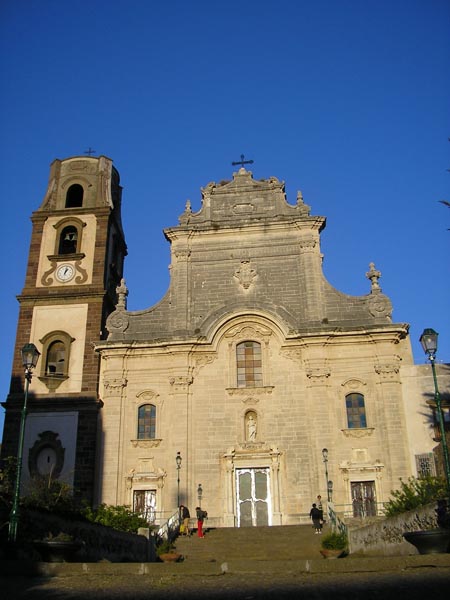
On this promontory excavations have carried out since 1950, unearthing the complex framework of civilization that populated the Mediterranean Sea. The abundant discoveries are exposed in the Aeolian Archaeological Museum, near the Cathedral.
Not surprisingly, the museum holds one of the largest archaeological collections of Italy. It is located in several buildings, all within the walls, and it is divided into five sections, which illustrate the ancient history of the Aeolian archipelago, from prehistoric to Roman times, with a special section on the study of volcanoes. Among the highlights of the museum there is an important collection of pottery and models of Greek masks of comedy.
Outside the museum you can visit the archaeological park of Contrada Diana, which houses several tombs and sarcophagi of the Greek-roman period (IV-II centuries b.C.).
Looking towards south, you can see one of the most photographed panoramas of Sicily. Marina Corta preserves almost intact the harbour area, with the typical fishermen houses of the early twentieth century. The harbour welcomes hydrofoils, which connect Lipari with the rest of the islands and with Sicily.
Marina Corta
Via Garibaldi revolves around the walls, and here you will find typical Aeolian ceramics shops, capers and Salina Malvasia wine.
Beaches and Excursions in Lipari
It is worth not to miss the way around the island on the panoramic road (26 km), that you can do by car, motorbike or bicycle. These vehicles can be rented in various shops in the port of Lipari. The streets are narrow and the brave driving of residents calls for some caution.
It is also possible to use buses, which connect Lipari to most beautiful beaches: Canneto Porticello and Acquacalda. Pay close attention to the times or you will have to resign to get there on foot.
You also have another option: using the services of one of the many agencies organizing excursions for all the Aeolian Islands. Search, compare, try to get a substantial discount and then choose the best conditions. It may be worth paying a little bit more for having the time to take pictures of the most beautiful spots, instead of making a real rally on boat.
Lipari Coast
Along the northeast coast of Lipari, between Capo Rosso and Porticello, there are pumice and obsidian quarries. The road along the coast literally becomes white, and you can still see the old piers used to charge ships with the extracted stone.
Acquacalda Village
The pumice stone characterizes two beautiful beaches. The first one is called Papesca, where still there are some remains of mining structures. The second one is called White Beach, on the north of Canneto, a spectacular extension of pumice stone, terminating in a turquoise coloured sea. Continuing towards Acquacalda, the road cross over the magmatic rivers coming from Rocche Rosse. We suggest you todelve into this impressive landscape on foot, made of characteristic lava conglomerates.
Near the village of Quattropani, a path leads to the ancient quarries of Caolino. It is one of the most beautiful and least visited places of Lipari, with its still active fumaroles.
The last town to visit beforereturning to Lipari is Pianoconte, where it is located the “belvedere Quattrocchi”, where you can enjoy an incredible view, that sums up why the landscape of the Aeolian Islands has starred in many postcards.
You can make a little detour to go to the Baths of San Calogero, a renovated spa that uses the thermal waters for the treatment of various diseases. The discovery of a tomb at Tholos (Mycena), dated around the fourteenth century b.C. and unique of its kind found outside Greece, it shows a flourishing trade with the Magna Greece.


